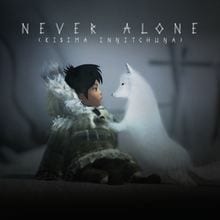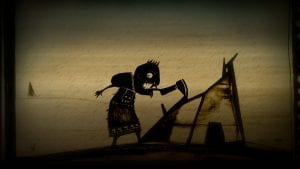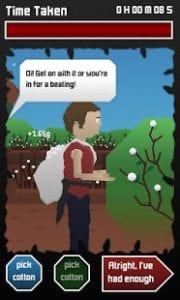Many of the essays in The Routledge Handbook of Digital Writing explore the possibility that writing might become an activity largely turned over to computers — not just as a generator of the finished product, but as the creator of content while humans take on the role of editors. If the idea seems too sci-fi for serious consideration…well, every sci-fi fan knows that as soon as the idea is dismissed, there is a fast cut scene, creepy music, and the exact thing we said could never happen–that’s what happens. So is it possible that computers could write meaningful prose? Yes. And no.
Yes, but…
Computers can and will write meaningful prose, but the texts they produce will almost certainly be rote texts. Think of our own current practices. I know very few working professionals that do not have a few “letter templates” stored in their computers–templates for letters of recommendations, thank-you-for-writing notes, or we’re-sorry-you-are-not-happy missives. When the need arises for such a piece of writing, we pull up the template, customize it to the specific situation, proofread, and we are done. So long as we are dealing with a type of writing that obeys a clear formula, our computer-stored template saves us time and gets the job done.
Spin-bots and paraphrasing software work are much less sophisticated than writing to a formula as a spinbot is essentially a substitution algorithm. And, of course, at the moment, they do not work exceptionally well, as shown in the example below where the first two paragraphs of an earlier blog posting have been “spun.”
Over the last few years, it has not been uncommon for me to hear a YA author or an aspiring YA author to lament that no one is interested in publishing their work unless it is part of a trilogy. This complaint is usually made with the grave shaking of the head and an implication (often unstated although much more often stated) that publishers are not interested in literature these days so much as they are interested in a franchise. The publishers are not, these authors claim, looking for the next To Kill a Mockingbird so much as the next Hunger Game or Divergent series that can be packaged and repackaged as movies, TV series, games, or toys.
But what if it turns out that this mania for series and the ubiquitous YA trilogies is not driven by a publisher’s attention to a bottom line (well, maybe just not entirely driven by that) as by actual changes in the expectations of the audience? What if today’s younger and maturing audiences are actually demanding not only a good story or an interesting character but their expectation of literature is that it affords them a playground with space for them to interact?
Over the previous few years, it has not been unusual for me to pay attention a YA creator or an aspiring YA author to lament that no one is inquisitive about publishing their paintings unless it is part of a trilogy. This grievance is commonly made with the grave shaking of the top and an implication (sometimes unspoken despite the fact that a whole lot extra frequently stated) that publishers are not interested in literature these days so much as they’re interested by a franchise. The publishers are not, those authors claim, looking for the next To Kill a Mockingbird a lot as the next starvation recreation or Divergent collection that may be packaged and repackaged as films, television series, games, or toys.
however what if it seems that this mania for collection and the ever-present YA trilogies is not driven with the aid of a publisher’s attention to a backside line (well, maybe simply now not totally pushed by way of that) as with the aid of real adjustments within the expectancies of the audience? What if cutting-edge younger and maturing audiences are truly demanding no longer simplest an awesome story or a thrilling man or woman but their expectation of literature is that it gives them a playground with space for them to have interaction?
Indeed, writing to a formula is key to computer-generated “original prose.” If a particular “genre” of writing — the thank you note or the academic paragraph–can be written as an algorithm, then a computer can generate a rough draft of the target text with minimal input from the user–if the user provides the main argument and supporting details, in theory, there is no reason the computer cannot produce the required text. Indeed, a group of students created a “story generator” to produce a short story with some strategic or random input. The stories are unique but follow the same set of story beats. https://www.plot-generator.org.uk/story/
A”writing” algorithm might work in a similar way, except it would pull stock phrases or sentences from a corpus of material, so if I wanted to a letter turning someone down, the algorithm would grab the following sentences:
- sentence thanking for interest
- sentence noting the strength of application pool
- sentence regretting their application was not accepted
- sentence encouraging the applicant to watch for future opportunities.
And if I wanted to write a body paragraph to an argumentative essay, the algorithm would grab
- a sentence stating a pro or con position
- a sentence identifying the most common statistic-based reason for the position
- a sentence explaining the significance of the position
- a sentence identifying the most common values-based reason for the position.
- a sentence relating the importance of the value to the larger community.
- a sentence restating the argument.
Where would the computer be drawing these sentences from? In a perfect world, a corpus of a writer’s own work (think about it–if you stored all the sentences from every Alexander McCall-Smith mystery novel into a corpus, wrote out the basic algorithm for a cozy mystery, and hired an editor to fill in the right names and change “Botswana” or “desert” to “Scotland” and “bog,” the author could keep publishing for years after his death). However, traditional college freshmen do not have a corpus of work that can be used for academic writing, so it seems more likely a corpus will be created from academic publications, past student papers collected by businesses like Turnitin, and publishers looking to provide the most comprehensive support to students possible. Auto essay writers can be found on the web — they are expensive, often virus-ridden, and provide bad content. As natural language processing continues to develop, however, these things will smooth out.
And no…
So, in theory and in practice, it will be possible for a computer to handle routine and “routinized” types of writing; however, at this time, the propensity of the computer is to imitate, not originate. If the purpose of academic writing was to reiterate what others have said in the same language as anyone else, then a computer will eventually be able to write or substantially draft an essay or thesis that sounds like very much like most other academic writing.
Computer algorithms absorb the tone and phrasings so well that humans are not always able to control it. For example, in 2016, IBM’s TayTweets project trained a bot to comment engage with Twitter posts under highly controlled conditions. Through the 18+ month that the algorithm was learning to learn, it was exposed exclusively to positive casual conversations; however, within one day of being released into and feeding off of the whole of Tweeter, the algorithm began tweeting racist and misogynistic comments.

 The story elements appear in the game as cinematics or cutscenes; the animation style changes from the Disney-style animation used for the player-controlled segments to a sepia-toned native art style. The narration is in the Iñupiat language with subtitles in the player-selected language. The i-documentary “insights” are released where they can add depth and understanding to the cultural elements as the player encounters them. The insights also tie the cultural elements to the present. As one tribal elder says in the first insight, the Iñupiat are a living people and a living culture. Although the technology has changed, the essential struggle for survival remains, a point that comes home in the story of a young man about being
The story elements appear in the game as cinematics or cutscenes; the animation style changes from the Disney-style animation used for the player-controlled segments to a sepia-toned native art style. The narration is in the Iñupiat language with subtitles in the player-selected language. The i-documentary “insights” are released where they can add depth and understanding to the cultural elements as the player encounters them. The insights also tie the cultural elements to the present. As one tribal elder says in the first insight, the Iñupiat are a living people and a living culture. Although the technology has changed, the essential struggle for survival remains, a point that comes home in the story of a young man about being 
